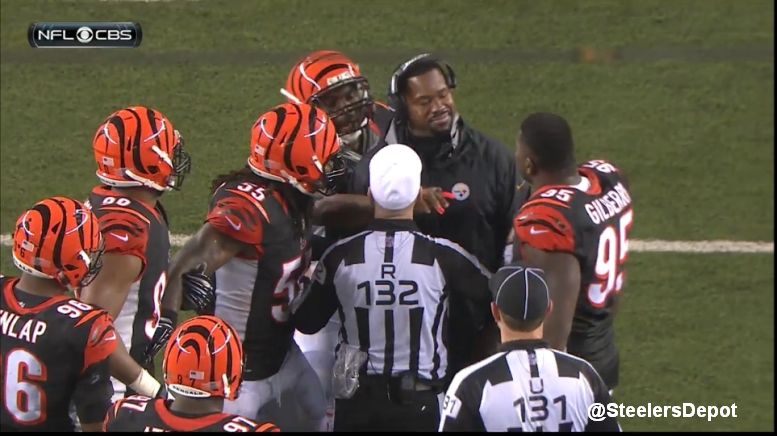As the NFL has advanced into the 21st century, many things have evolved along with the times, to become more in-line with the broader society that makes it the megabusiness that it has come to be. The bigger it gets, the more it has to protect itself, and its image, as well.
Minor tweaks have been made to just about everything, even down to scouting, where character red flags have become increasingly more important. For example, teams were so scared off from La’el Collins last year that he ended up going undrafted, in spite of being a near-unanimous first-round talent.
Many teams routinely shy away from character red flags as a habit, for one reason or another, whether it is to minimize the risk of incident or because it doesn’t fit in with the culture of the organization. The Pittsburgh Steelers are among them, but even they deviate.
One of the few teams that have routinely been the refuge of these players who most other teams would not touch would be the Cincinnati Bengals, who actually have a fairly strong record of getting quality on-field play from many of these sort of redemption projects, particularly under Marvin Lewis as head coach.
But those red flags are there for a reason, and always have the potential to make themselves known, as Lewis and the Bengals discovered late Saturday night in their Wildcard loss to the Steelers, when their two most volatile locker room personalities helped to contribute to a surprising turn of events.
Very late in that game, with under 30 seconds the play, the Steelers, struggling to get anything going with a battered Ben Roethlisberger, had just barely crossed midfield when the quarterback misfired high to Antonio Brown.
As Brown landed from attempting to snag the high pass, however, linebacker Vontaze Burfict crossed behind him and connected on a jarring helmet-to-helmet hit that left the wide receiver sprawled out on the playing surface for several minutes, resulting in a likely concussion.
As players, coaches, and medical personnel took the field to see to their teammate, there arose some commotion between the two sides, which ultimately resulted in cornerback Adam Jones drawing yet another penalty to tack on to the one Burfict had already drawn.
The two 15-yard personal foul penalties instantly pushed the ball forward from the 47-yard line on an incomplete pass with 18 seconds remaining all the way to the 17-yard line. The Steelers did not hesitate, promptly kicking the go-ahead field goal to take advantage of Cincinnati’s mental collapse.
These are the sorts of risks, among others, that you introduce to your team when you not only bring in high-risk characters, but also enable them, and put them together. The consecutive incidents in Paul Brown Stadium that night merely serve as a microcosm of how such issues can manifest themselves. “There are a couple of times tonight where you’ve wanted to use the word ‘disgraceful’”, as they said during the broadcast of the game.
The broader effect, in terms of in-stadium play, is that the Bengals have been among the least-disciplined and most-penalized teams in the league, finishing with 119 accepted penalties on the season. Teams without strong discipline often struggle at critical moments to maintain their composure, and Cincinnati’s implosion on Saturday night is a perfect example of that.








